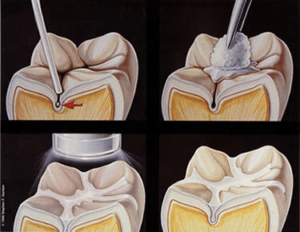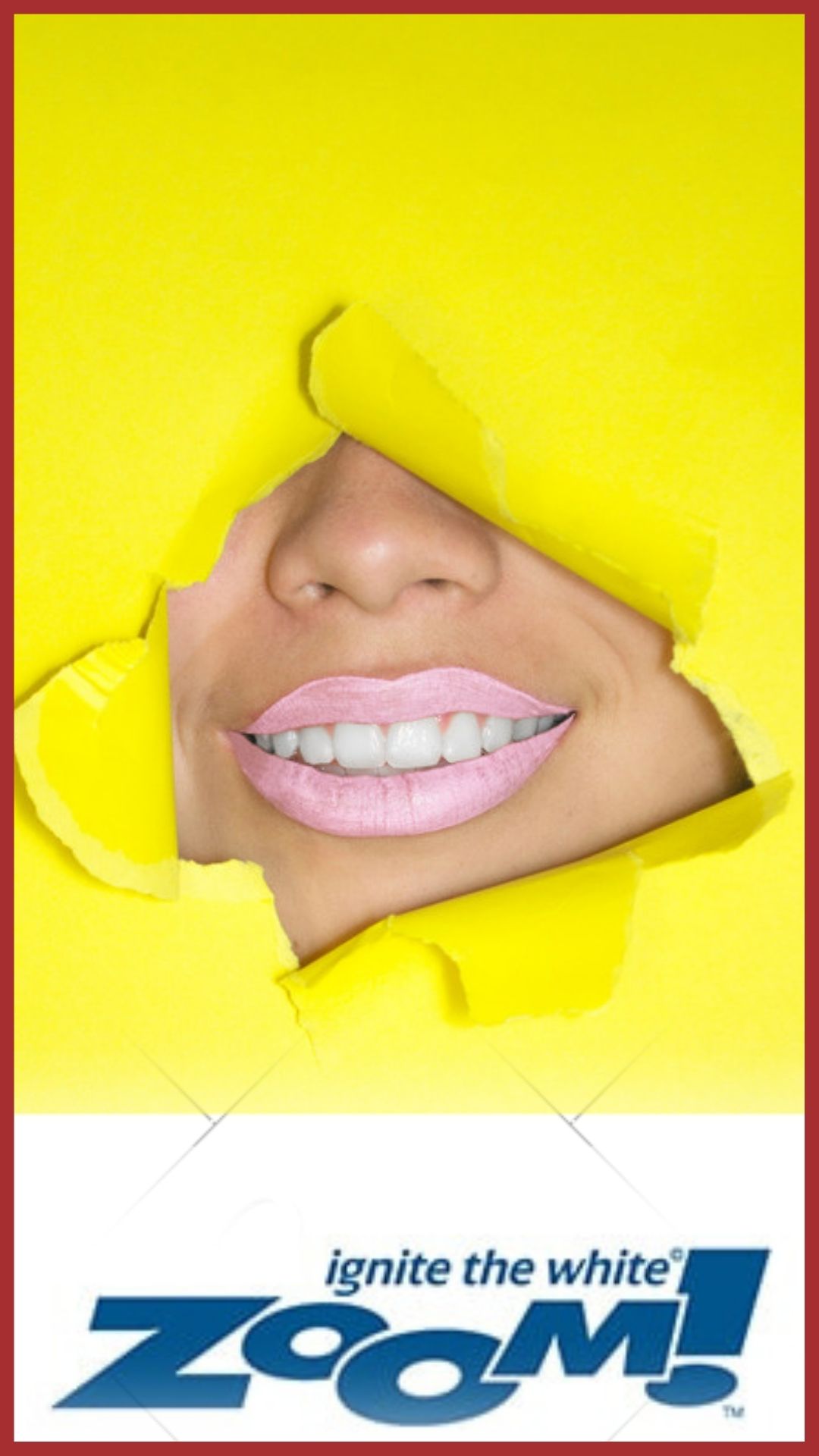Fissure Sealants
 Fissure sealants are protective tooth coloured hard resin coating that is applied on the teeth. Fissure sealant helps in bonding the grooves (known as fissure) and pits of teeth to stop decay from forming.
Fissure sealants are protective tooth coloured hard resin coating that is applied on the teeth. Fissure sealant helps in bonding the grooves (known as fissure) and pits of teeth to stop decay from forming.
The primary cause of tooth decay is due to the acid produced by plaque (bacteria) trapped in the groove. The plaque gets trapped since deep pits, fissures or grooves in teeth are often not reached by the fine bristles of a toothbrush.
Root Canal Treatment

Root Canal Treatment is a commonly used dental procedure that is undertaken when the pulp (that provides blood or nerve supply to the tooth) becomes infected through decay or injury. Sometimes this infection can cause an abscess. The procedure involves removal of this pulp followed by cleaning the inside of the tooth and sealing it with a filling. Root canal treatment prevents pain and infection in decayed or traumatised teeth, while keeping the tooth functioning in the mouth.
A root canal treatment usually consists of the following steps:
- The canals of the tooth are located and negotiated to the root of the tooth
- The canals are cleaned and shaped
- A filling is placed inside the root of the tooth
The procedure on average may take approx. two to four visits for completion. The procedure is usually totally painless, as the affected area will be numbed completely. However, some patients can experience discomfort during initial stages of this treatment, if the nerve tissue is inflamed. In such instances, you will be treated with antibiotics and analgesics.
Upon completion of this procedure, the tooth is often left weak and prone to breaking. Depending on the amount of tooth structure left, a crown is recommended by the dentist to prevent any future tooth loss.
Tooth Replacement
The loss of a tooth or teeth, more importantly the front tooth can be a great matter of concern for people as it can affect them emotionally. Any gaps that occur due to teeth loss has the potential to cause drifting, besides affecting adjacent teeth – through tilting etc.. The loss of teeth and resulting tilting, drifting can also lead to tooth decay, gum disease, and potential jaw problems.
What are the methods for replacing missing teeth?
There are a range of techniques that can be used to replace missing teeth. The choice of an appropriate method/technique to replace missing teeth is determined by the size of the gap and its position and its proximity to adjoining teeth. Some of the common methods currently available to replace missing teeth is through use of Bridges, Dental Implants and Partial or complete dentures.
Oral Hygiene
What is Oral Hygiene?
Oral hygiene is all about avoiding potential dental problems and bad breath by following simple procedures such as regular and routine cleaning. This routine cleaning involves regular and correct brushing, flossing and tongue cleaning. These use of these procedures regularly will enable individuals maintain good oral hygiene and mitigates problems of dental cavities, gingivitis, periodontal (gum) diseases, bad breath and prevention of plaque. In addition, limiting the consumption harmful foods such as sugar, soft drinks as well habits like smoking are all important to maintain a good oral hygiene.
However, very few people are able maintain a proper oral hygiene or practice perfect plaque control at home. This usually results in the presence of bacterial plaque around teeth and gums. Their presence is causes both tooth decay, periodontal diseases and bad breath.
The common symptoms of improper dental hygiene involves bleeding or painful gums, bad breath, widening gaps between the teeth and presence of yellow or brown coloured deposits on teeth. It is therefore recommended to have these plaque and deposits removed professionally on a regular basis (6 months – 1 year) to prevent these diseases – hence the 6 monthly reminders from your dentists!!!
Dentures
Dentures are removable replacements used to replace your missing teeth.

Dentures are commonly used when an individual has lost their natural teeth due to either gum disease, tooth decay or injury. Replacing missing teeth with dentures benefits both your appearance and your general health – aiding individuals to eat comfortably and your emotional health- making you more confident. Dentures also help to prevent the sagging of facial muscles, without which a person may look older. Importantly, dentures are very similar in appearance to natural teeth, and generally help people improve their smile or facial appearance.
What is a Denture?
Dentures are appliances commonly worn to replace lost or missing teeth. There are three types of dentures commonly used:
(a) Complete dentures
(b) Partial dentures and
(c) Implant supported dentures.
Both the complete and partial denture types have a base, known as the plate and either made of acrylic (plastic) or metal. The teeth are usually made of acrylic and made to appear like your natural teeth. In a complete/full denture – all your natural teeth are removed across both your upper or lower jaws and the denture fits snugly over your jawbone and gums. In a partial denture, the gaps left by one of more missing teeth is replaced by these false teeth present on the plate. These partial denture clips on to your natural teeth through metal clasps that secures holds the denture in your mouth. In implant-supported dentures, the dentures are attached on via the implants enabling the denture to stay firm while chewing and conversing,
Dentures are usually removed before going to bed each night. Dentures also require regular maintenance and should be cleaned using a soft toothbrush or denture paste to remove food debris and plaque.
Tooth Extractions
Tooth extraction involves having one or more teeth completely removed from your mouth. A tooth can be removed for the following common reasons.
- Severe gum disease (periodontal disease) – when bacteria build up on your teeth and damage the bone that holds them in place, the teeth may become loose
- Tooth decay – if a tooth is very rotten, its nerves and blood vessels can die, leading to a painful abscess
- Broken tooth that can’t be repaired
- Crowded teeth – if you have a small jaw or lost your milk (baby) teeth early, your teeth may be crooked and you may need to have one or more removed so that the rest can be straightened
- Wisdom tooth problems – if there isn’t enough space in your mouth for your wisdom teeth they may become impacted (stuck behind the tooth in front) and need to be removed
If you don’t want to have your tooth taken out, sometimes alternative treatments are available.
Painkillers or antibiotics may ease any pain and swelling, but these will just relieve your symptoms in the short term and won’t get rid of the underlying problem.
If an infected tooth is identified early enough, you may be able to have root canal treatment instead of having the whole tooth removed.




